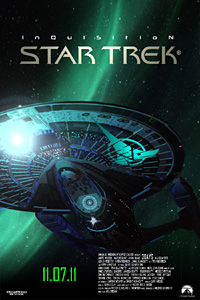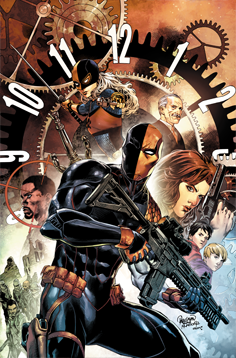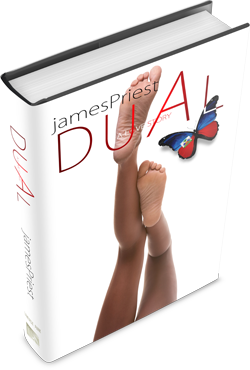You Really CAN'T Go Home Again
Klang! A Writer’s Commentary is a series of essays
about my experience co-creating and writing Quantum &
Woody for Acclaim Comics and, later, Valiant
Entertainment. The quirky, humorous, and yes, poignant
relationship depicted between the two main characters echoed
that of their creators, including the volatile episodes of
deeply entrenched creative differences.
Klang! began as a simple website entry but it grew
and took on a life of its own, leading me to post it to my
Kindle store along with some unpublished scripts and early
drafts. It is an account I’ve taken a lot of heat for from
people who absolutely were not there and therefore have no
idea what they are talking about, but that’s the fun part of
being in this business. If I wasn’t clear enough in the
essays, let me try it here: I, myself, me, am just as
much to blame as anyone else for the turbulent creative
process. It was a group mugging, one which, sadly,
forced me to leave Eric and Woody behind in a fnal story
that was not all it could or should have been. Klang! is a
cautionary tale of a kind of group insanity clashing the
best of intentions into a deeply disappointing creative
experience, one which ultimately led to a parting of ways on
far less-than-ideal circumstances.
More about Klang! here.
Dual
The basic premise here is fairly simple: a murder mystery
narrated by the victim. My agent declined to shop Dual
because of this narrative choice and encouraged me to
rewrite it. But the murder victim’s snarky tone is the live
wire of the story, and it’s not as if this technique’s never
been used before (Sunset Strip). Dual is a
drama-romance-mystery centering around a pair of exotic
identical twins. One of them is a murderer, and it falls
upon Queens County District Attorney Detective Gerry
Martinez to figure out which or risk a mistrial. Things go
wildly out of control, involving international political
intrigue and mysterious gunmen out to kill one or both of
the twins as Gerry finds himself inexorably drawn to first
one twin and then the other. He learns that, to fall in love
with one is to fall in love with both. And, falling in love
with both can get you killed. More on Dual
here.

Zion
Zion is a procedural crime drama about a New York
City Fire Marshal who is investigating the arson of a church
with whose married pastor she’s been having an affair. The
New Greater Mount Zion Missionary Baptist Church, the
dominant megachurch in Far Rockaway, Queens, is revealed to
have been a clandestine money-laundering “bank” run by an
alliance of local ministers on behalf of a dangerous drug
cartel under the protection of corrupt police officials.
Zion’s firebombing unsettles the fragile alliance, turning
the players against one another and all of them looking for
Kai Tremaine, Mount Zion's pastor, who has vanished under a
cloud of suspicion. Michael Zoe Dallas, the arson
investigator, is the last person to have seen Tremaine
alive. Caught in the crossfire between the disintegrating
cops-preachers-crooks alliance, she furtively attempts to
unravel the deepening mystery of Zion’s bombing and its
pastor’s disappearance.
Zion is, frankly, about the seeming unstemable tide
of gross moral failure on the part of church leadership, and
the antichrist culture of ego, materialism, and hedonism
that has in large measure reduced the African American
church to a corrupt caricature of its former glory. This
disgraceful “Aunt Esther / Madea” climate is so widespread
and so accepted as part of the African American “culture,”
that I am hard-pressed to even refer to these places as
“churches” anymore, as they have—in practice—sharply
diverged from the personal example of Jesus Christ.
Caught in a political headlock by equally corrupt cop and
FDNY bosses, Dallas must descend into this snake pit of
huckster pastors in order to solve the mystery before unseen
forces mark her as a suspect.
Omnipedia: The complete eBook collection.
PraiseNet Essentials
The PraiseNet Essentials are a series of ecumenical essays
written about the black church. There are a wide variety of
topics, including African American church tradition versus
theology, organization, internal politics, purpose,
doctrine, and an in-depth analysis of the strengths and
weaknesses of African American church culture. Here I get to
flex my pastoral muscles with a collection of pointed,
irreverent, contextually critical no-holds-barred
observations based upon more than fifty years of service to
the African American church.
The series includes: Fear of A Black Church, Black Faith
101, The Levite’s Concubine, The Glass House, Sex & The
Single Christian, LGBT: In The Name of God.
Christopher J. Priest
28 June 2016
contact
TOP OF PAGE

 Realizing
no comic publisher would or could guarantee me 37 published
issues, and facing the likelihood of the series being
cancelled before the entire story could be told, I thought
to publish 1999 as a kind of “pulp” revival—a prose magazine
with illustrations. That was the format—a serialized
novel—we settled on when I developed the series in 2007.
Realizing
no comic publisher would or could guarantee me 37 published
issues, and facing the likelihood of the series being
cancelled before the entire story could be told, I thought
to publish 1999 as a kind of “pulp” revival—a prose magazine
with illustrations. That was the format—a serialized
novel—we settled on when I developed the series in 2007.








